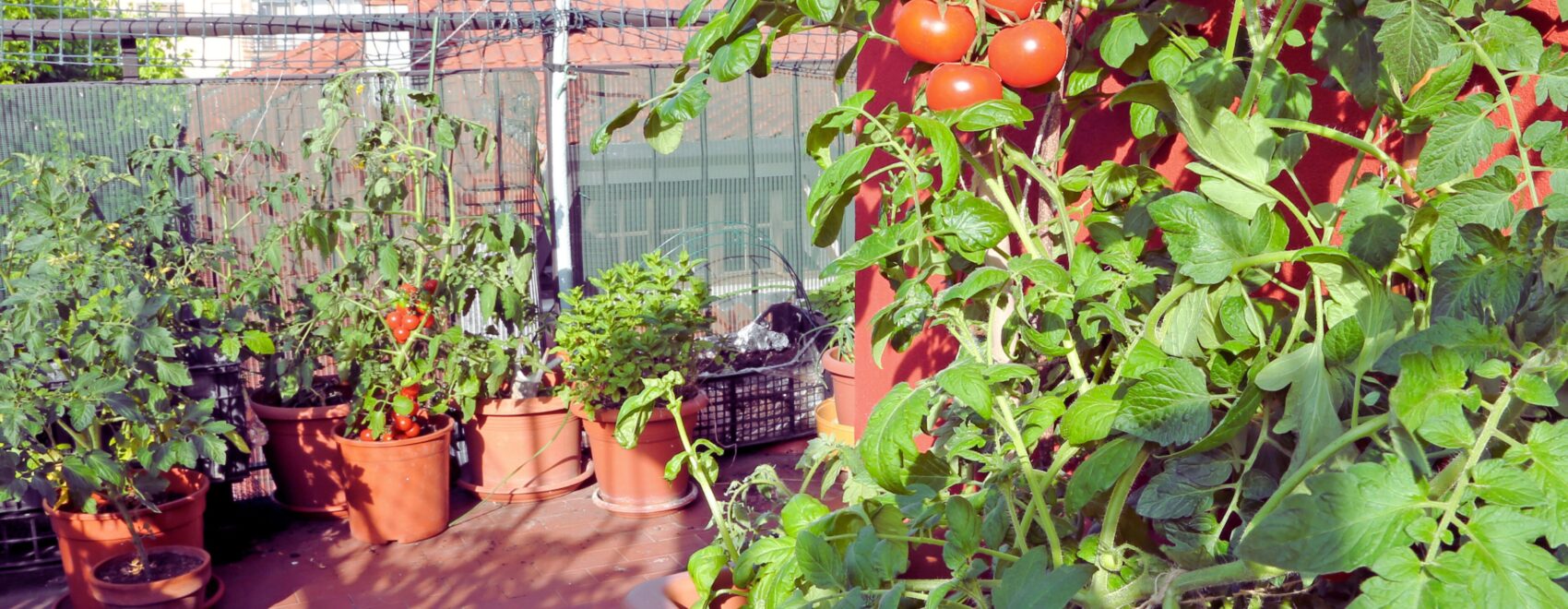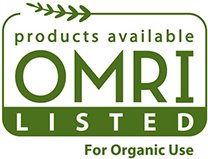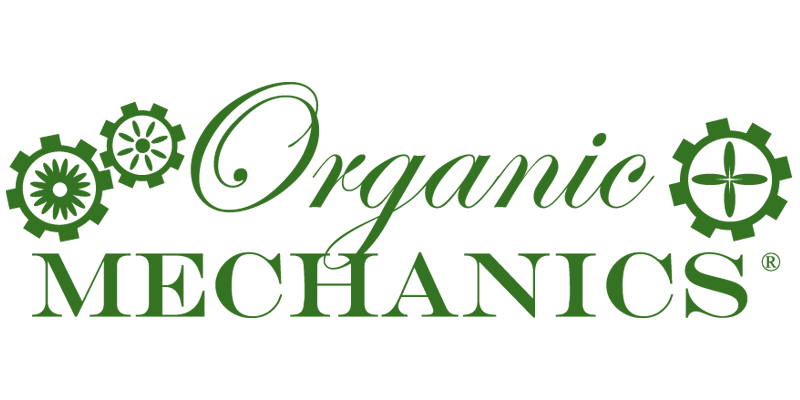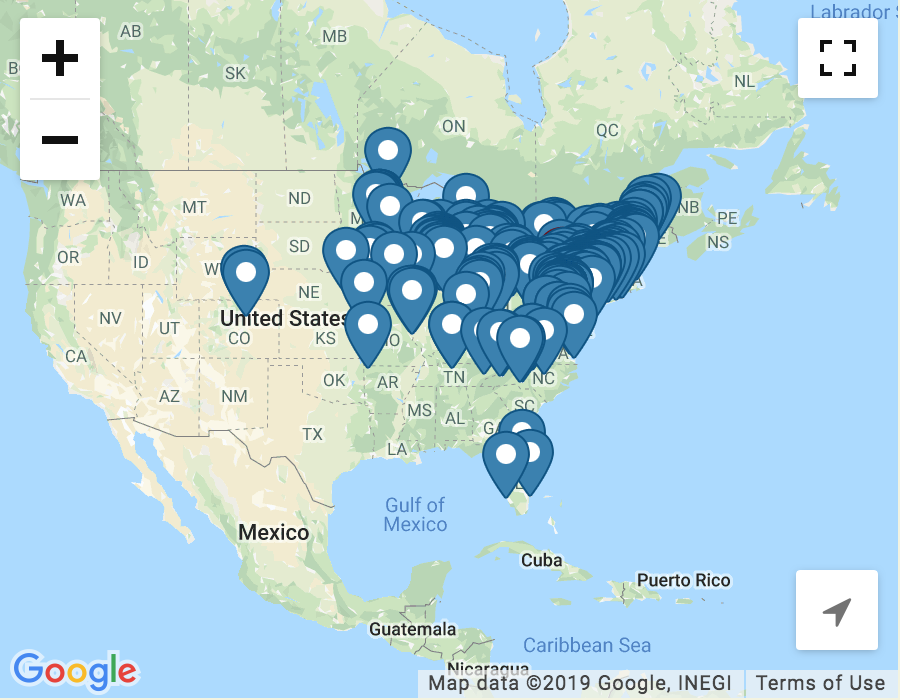Growing vegetables in containers can benefit everyone. Whether you have a sprawling back yard or a postage stamp-sized urban patio, containers can and will elevate (quite literally) your veggie growing game. You may think container gardening is relegated to a balcony, porch or even a driveway. Sure, those are great spaces for them, but even if you have an in-ground garden already in the works, growing some of your veggies in pots, fabric bags or even small raised beds (yes, those are containers!) within the larger garden is a smart thing to do.
Why? Because growing vegetables in containers offers a number of benefits beyond just saving space. It helps control soil quality and manage pests more easily, and it enables gardeners to relocate plants for better sunlight exposure or protection from weather. It’s also ideal for people with physical limitations, as containers can be placed at various heights for easier access.
Without a doubt the best thing about growing vegetables in containers is that it allows anyone with a window or outdoor space of any size to grow fresh food. With the price of produce creeping up in recent years, it’s comforting to know that the grocery bill can be supplemented at least in part by vegetables grown within arm’s reach.
Container-Appropriate Vegetables
Some vegetables are more appropriate for growing in containers than others (for this blog, we’ll define “container” as a soil-holding vessel that is not a raised bed). On the extreme end, a giant pumpkin is not suitable for a container, nor are many of the sprawling vines of squashes and cucumbers, for example.
We’ve put together a list of veggies well-suited for growing in containers:
Tomatoes
Determinate tomatoes, or tomatoes that grow to a certain height and then stop growing, are totally suitable for containers with little to no staking. Some varieties such as ‘Bush Beefsteak’ and many of the Roma-style varieties are in this category. Breeders have also developed a number of varieties that are dwarf, such as ‘Tiny Tim’, ‘Micro Tom’, and ‘Little Bing’ and are small enough for hanging baskets and pots.

Peppers and Eggplants
Both sweet and hot peppers and eggplants do well in containers. The larger varieties will need some sort of support. Two recent pepper varieties, ‘Pot-a-peño’ and ‘Peppers from Heaven’, are bred to be cascading in habit and are suitable for hanging baskets. The ‘Patio Baby’ eggplant is container-sized and produces small, 2- to 3-in. fruits.
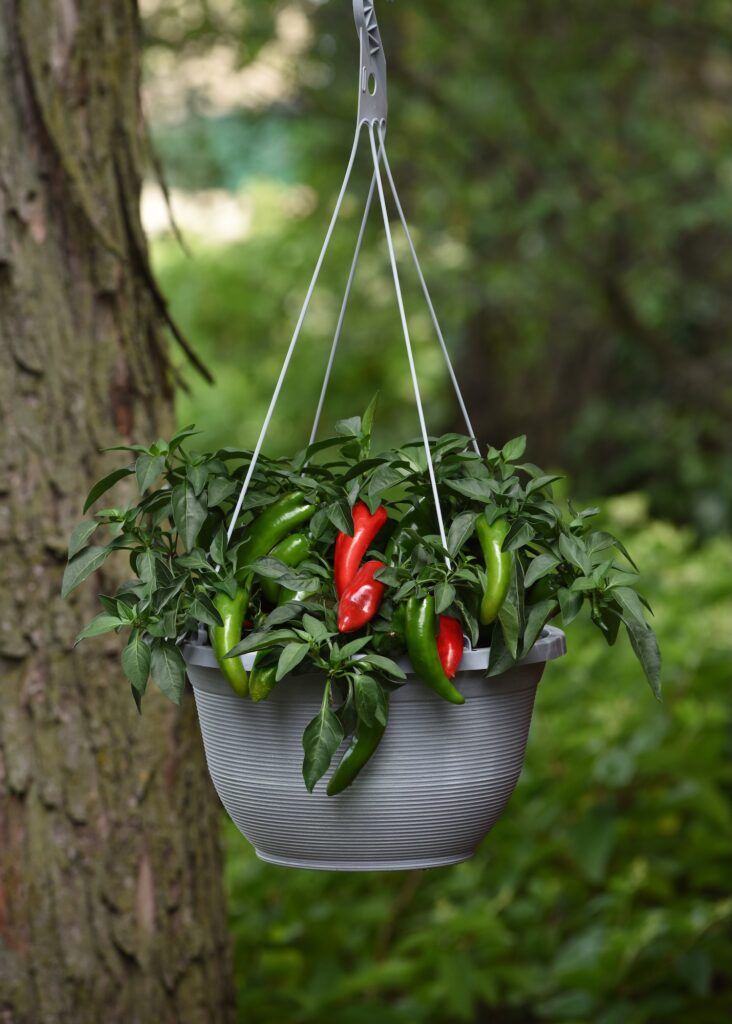
Lettuces/Greens
Not only are lettuces and greens just the right size for containers, they are also beautiful and unexpected additions to flower-filled containers. Swiss chard , with its vibrantly colored stems, is a perfect match for annual flowers.
Beans and Peas
Both bush beans and pole beans are appropriate for containers. The latter needs some support to grow upward. This also makes it a nice focal point placed on a deck or even within a larger garden. Peas are also an option for containers and will definitely need something to climb on to protect the crop.
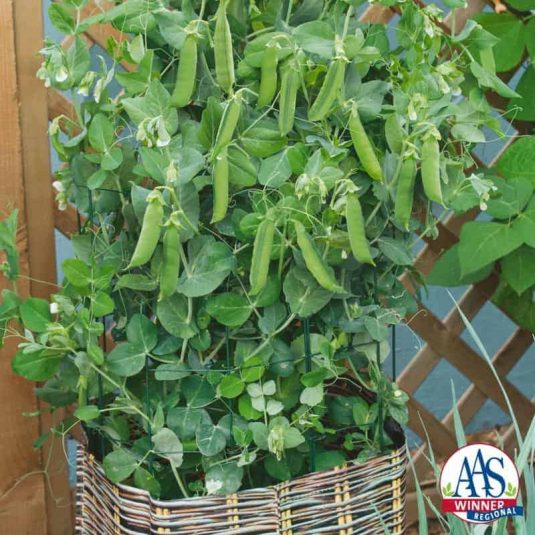
Cucumbers and Squash
Believe it or not, there are compact varieties of cucumbers and squash specifically bred for containers. Some examples of squash bred for pots are ‘Baby Bush’ and ‘Patio Star’ and examples of cucumbers are ‘Salad Bush’ and ‘Bush Champion’.

Choosing the Right Container
The larger the plant, the more soil it needs to hold all the water it needs, and therefore larger the pot it requires for successful growth. For example, tomatoes need at least a 5-gal. container. Smaller plants like lettuce and greens can thrive in 6-8 in. deep pots.
As for its construction, terracotta, plastic, wood, fabric grow bags, and ceramic are all viable options. Keep in mind that plastic and ceramic containers tend to retain moisture better, while terracotta offers breathability but can dry out quickly.
And it goes without saying that your containers MUST have drainage. Otherwise, your containers will retain water and impact the functioning of the roots, leading to root rot and plant death.
Soil Considerations for Vegetables in Containers
Much of what you need to consider when it comes to soils for container veggies is similar to what we mentioned last month for growing berries in containers. Vegetables will thrive when their root zones are happy. This most often occurs when they are nestled in a well-draining yet moisture-retentive mix. Do not use garden soil in containers! This becomes compacted when used in containers and that leads to drainage issues, and hence poor root health.
As we explained in our berry blog post, our Organic Mechanics 110 Blend provides that perfect balance of moisture retention and aeration. This is possible due to the precise combination of coir, perlite, biochar, and compost it contains. The addition of earthworm castings, bone char, azomite, zeolite, alfalfa meal, and kelp meal help to give you better yields, tastier flavor and a bigger and better harvest.
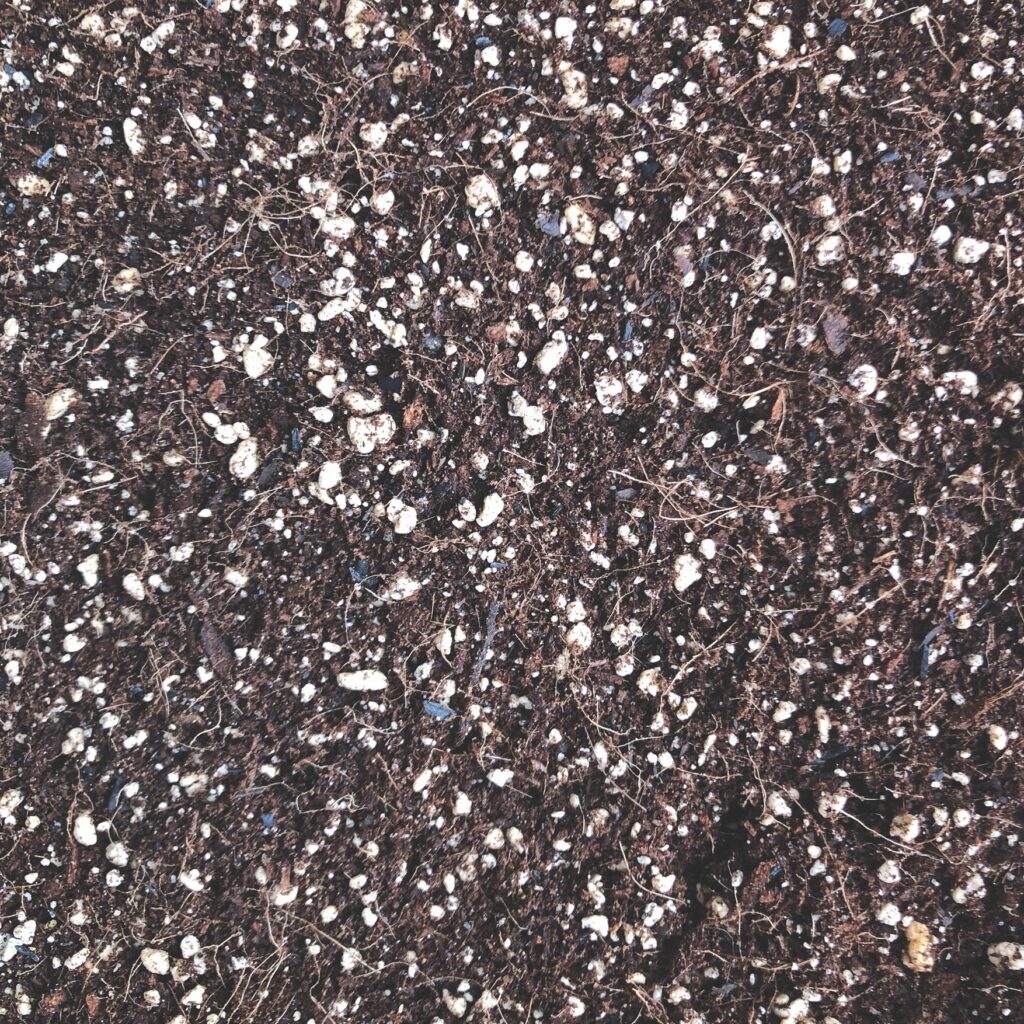
Don’t forget to fertilize your container veggies! These crops will grow enormously during the summer and will need all the nutrients they can get to build healthy (and nutritious) cells. You have choices when it comes to fertilizing: Sidedress with a flower/fruit fertilizer a few times during the growing season; use a balanced, slow-release granular fertilizer (our Root Zone Feeder Packs fit the bill!) when potting up and also halfway through their growth cycle; or feed weekly with a liquid organic fertilizer.
Staking and Trellising
We mentioned it quickly above, but it’s worth repeating: Vertical support in containers helps to not only keep plants upright but to also keep them healthy and productive.
Tomatoes (other than the ones bred for hanging baskets) will need cages, stakes, or trellises to support growth and prevent branches from breaking under the weight of foliage and fruit.

Pole beans and peas require trellises or netting for climbing. Best to get those in place from the start, as trying to weave them along poles after growth can be difficult.
Cucumbers and melons will need a sturdy trellis to keep fruit off the soil and also to improve air circulation.
Peppers and eggplants do well with cages or trellising to help keep stems from falling outward with the weight of the fruit.
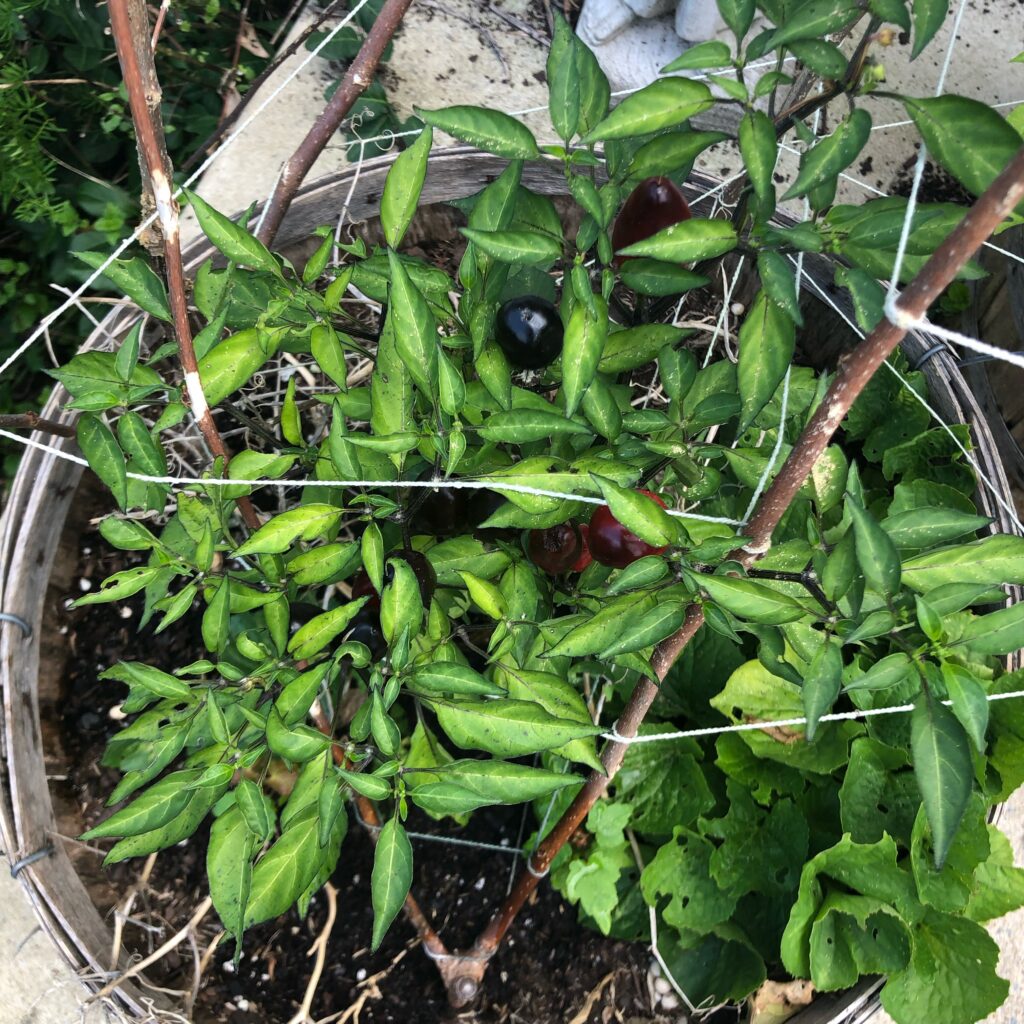
With the right containers, soil, and a watchful eye, growing vegetables in containers will reward you with fresh produce right at home. Whether you’re an urban dweller with a sunny windowsill or a suburbanite with a little more room to spare, container gardening puts the power of fresh food within your reach—one pot at a time.

